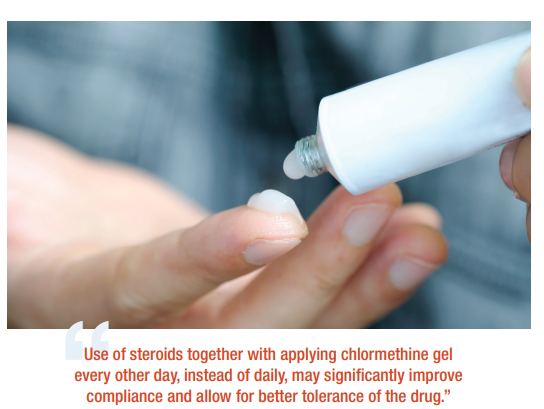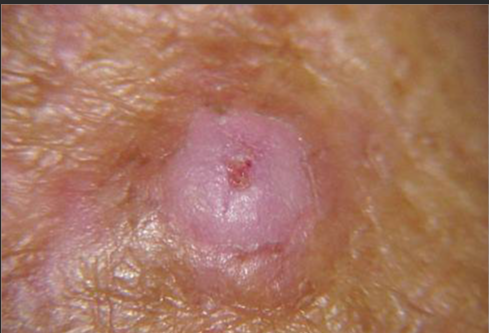Real-life vs. clinical trial use of chlormethine gel
With Larisa J. Geskin, MD, FAAD
In combination with other therapies, chlormethine gel treatment is an important therapeutic option for patients with mycosis fungoides, contributing to reducing the severity of skin lesions and improving health-related quality of life, according to a recent real-world study.1

The study—a shared experience of several high-level specialists from various countries—provides valuable know-how, which is applicable to different countries around the globe, noted Larisa J. Geskin, MD, FAAD, one of the study’s authors.
“Clinical trials, while showing the efficacy of the therapy, do not necessarily provide doctors with know-how,” she said. “Using medication in real life versus clinical trial may be a completely different experience. In clinical trials, only drugs being tested are allowed to be used, while in real life, we can frequently combine a number of drugs to get the best effect. Similarly, topical steroids were not allowed in the clinical trial resulting in a very high rate of irritation/dermatitis. In real life, we can combine chlormethine gel (Valchlor) with steroids to improve its side effect profile and increase its efficacy. It’s not surprising that the rate of contact dermatitis was much lower in ‘real life.’ Also, in real life, application was not limited to people with only early stages of the disease. The chlormethine gel was used across all stages to add synergistic effect to systemic agents, such as HDAC inhibitors.”
Such findings enable dermatologists and their patients to achieve the best results using all available means, she emphasized. For instance, “use of topical steroids, especially when initiating therapy with topical chlormethine gel, is highly advisable,” she recommended. “Use of steroids together with applying chlormethine gel every other day, instead of daily, may significantly improve compliance and allow for better tolerance of the drug. This, in turn, results in better clinical outcomes and patient satisfaction.

“As a cytotoxic agent, I foresee its use where we traditionally use similar cytotoxic drugs, such as psoriasis, for example. Moreover, there are old studies, which show that it may be efficacious in treating alopecia areata, among other disorders.“
The study’s global perspective also offered valuable insight. “We need to be mindful when discussing various treatment options and algorithms, as they might not be applicable in different countries,” she said. “Frequently, the guidelines need to be adjusted to reflect available therapies.
“Using chlormethine gel is a true art,” Dr. Geskin emphasized, “and I would like our dermatological community to know that we are there for them, should they have any questions.”
By Nayda Rondon
_____________________________________________________________________________________________________________________________
REFERENCE:
1.Kim, EJ, Guitart, J, Querfeld, C, et al. The PROVe study: US real-world experience with chlormethine/mechlorethamine gel in combination with other therapies for patients with mycosis fungoides cutaneous t-cell lymphoma. Am J Clin Dermatol. 2021. 22:407–414.
_____________________________________________________________________________________________________________________________
DISCLOSURES:
Dr. Geskin received a research grant from Actelion; consulting fees or honorarium from Actelion, Helsinn, Mallinckrodt, Sanofi, and Regeneron; and served on a speakers’ bureau for Helsinn.

